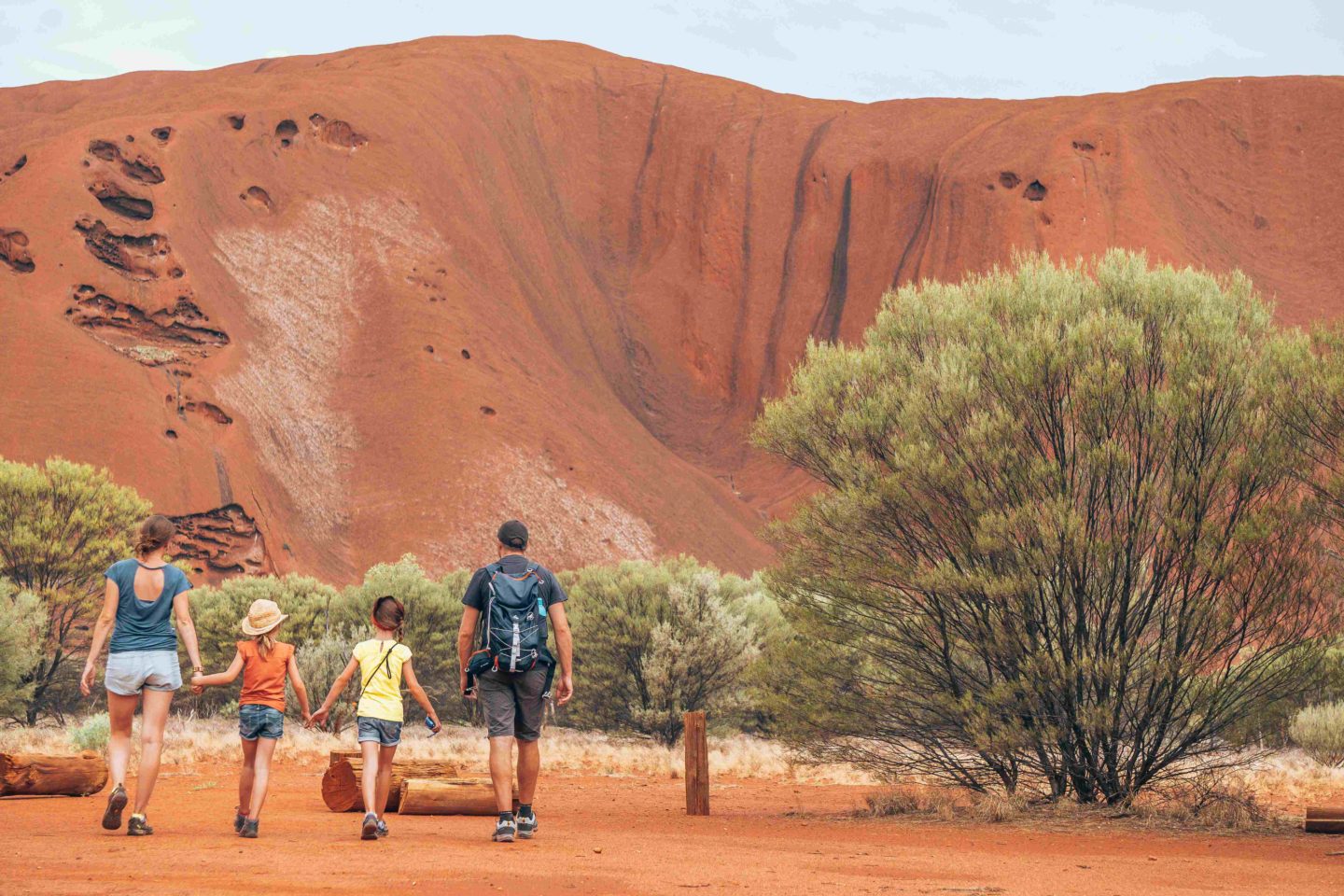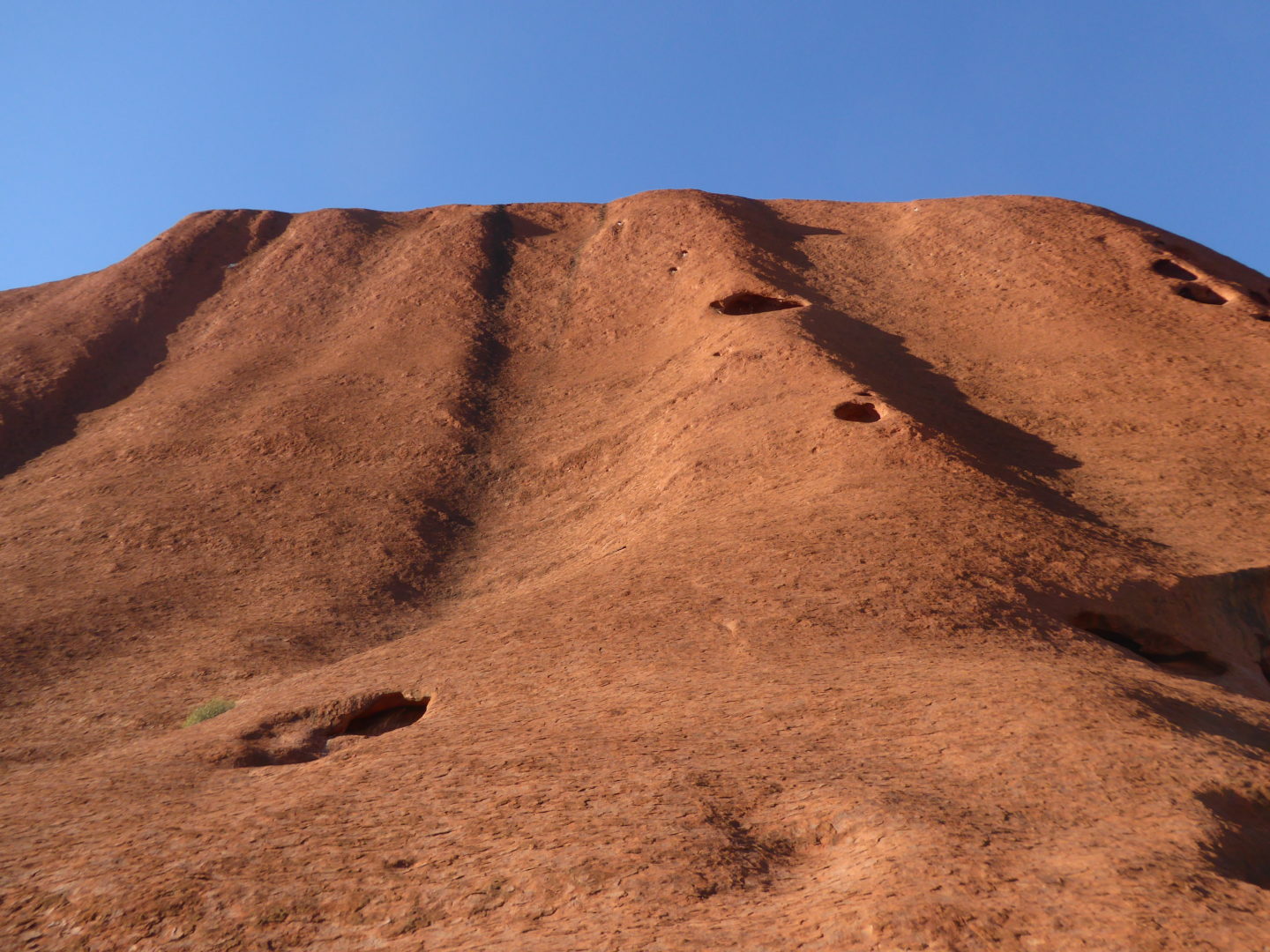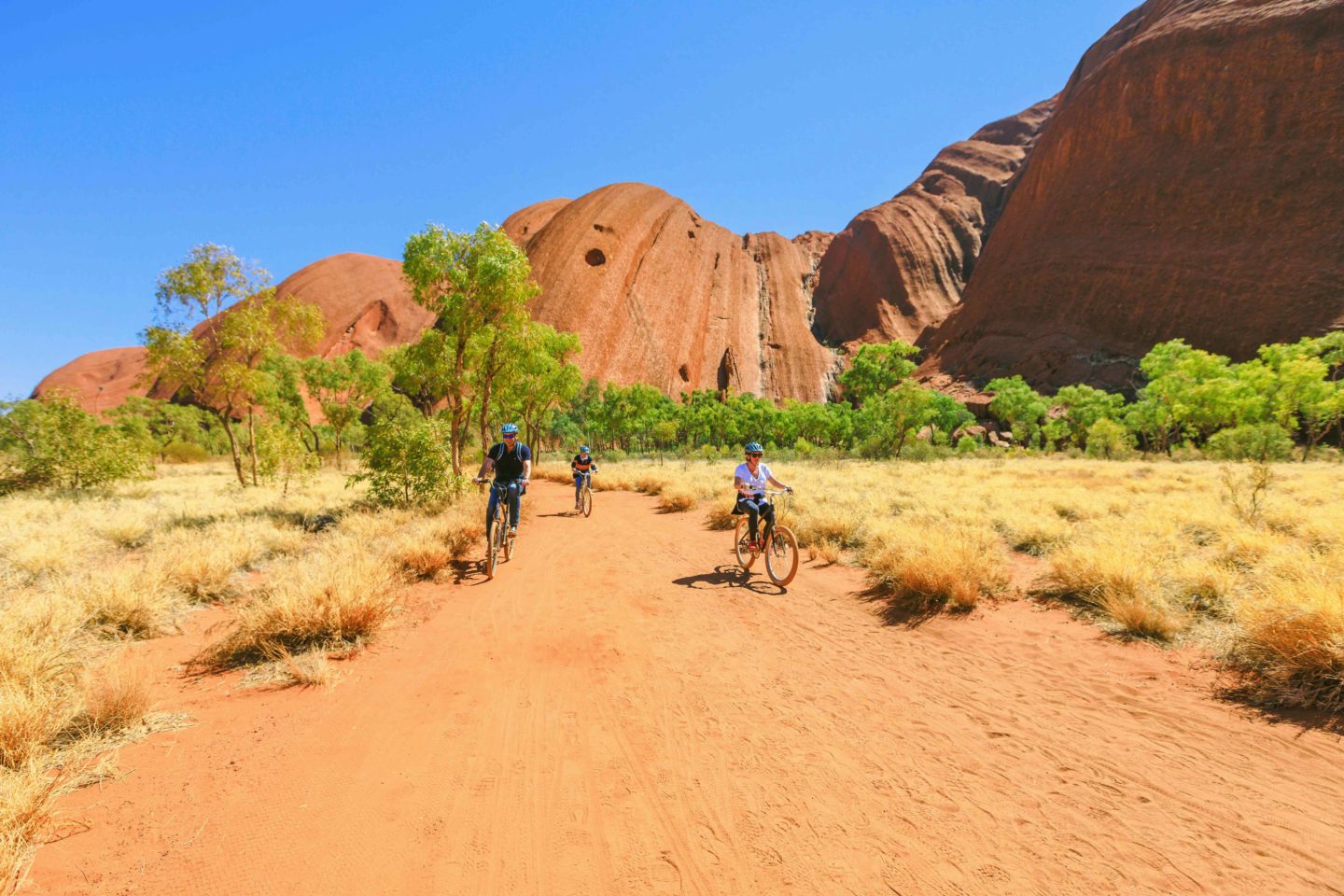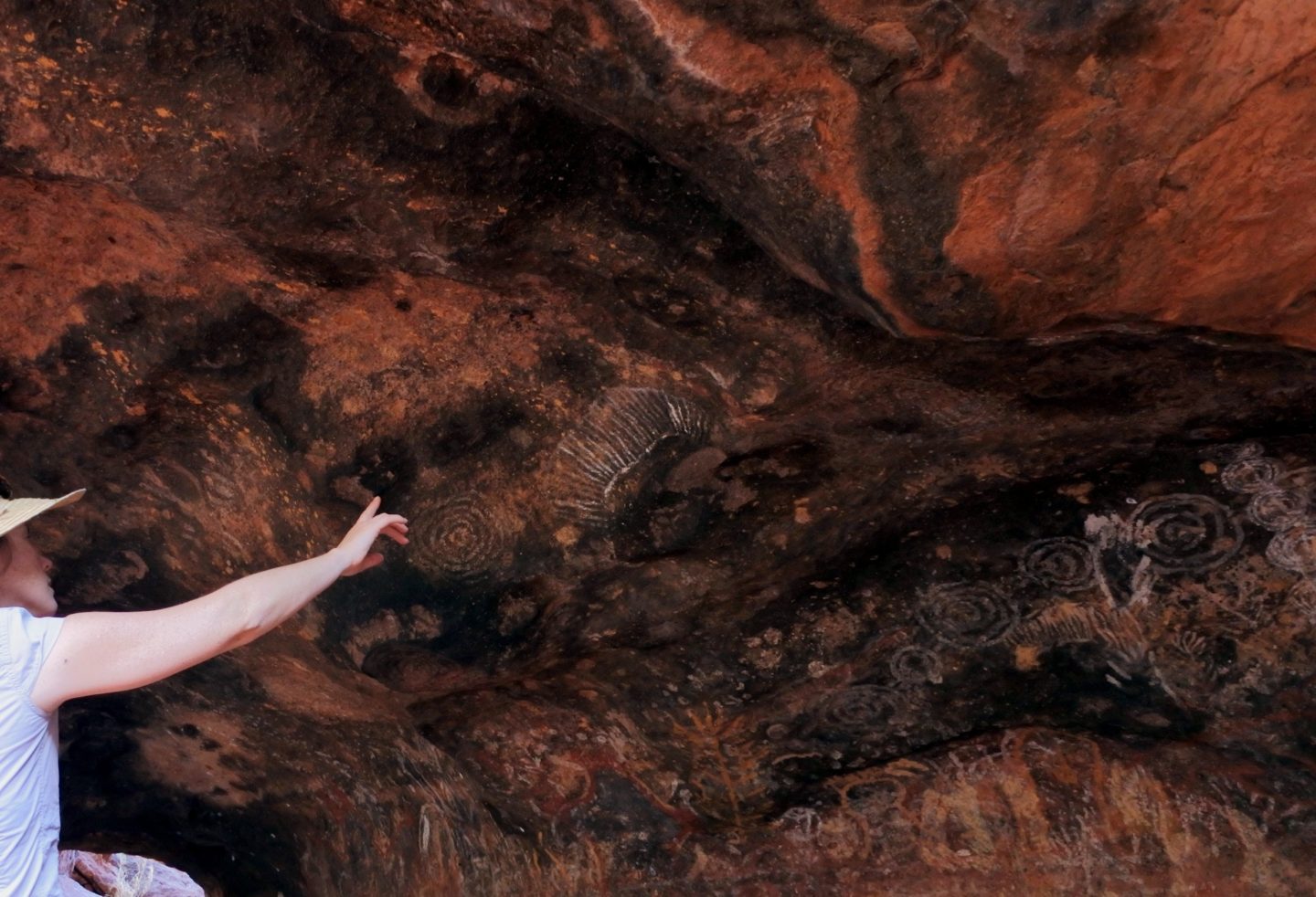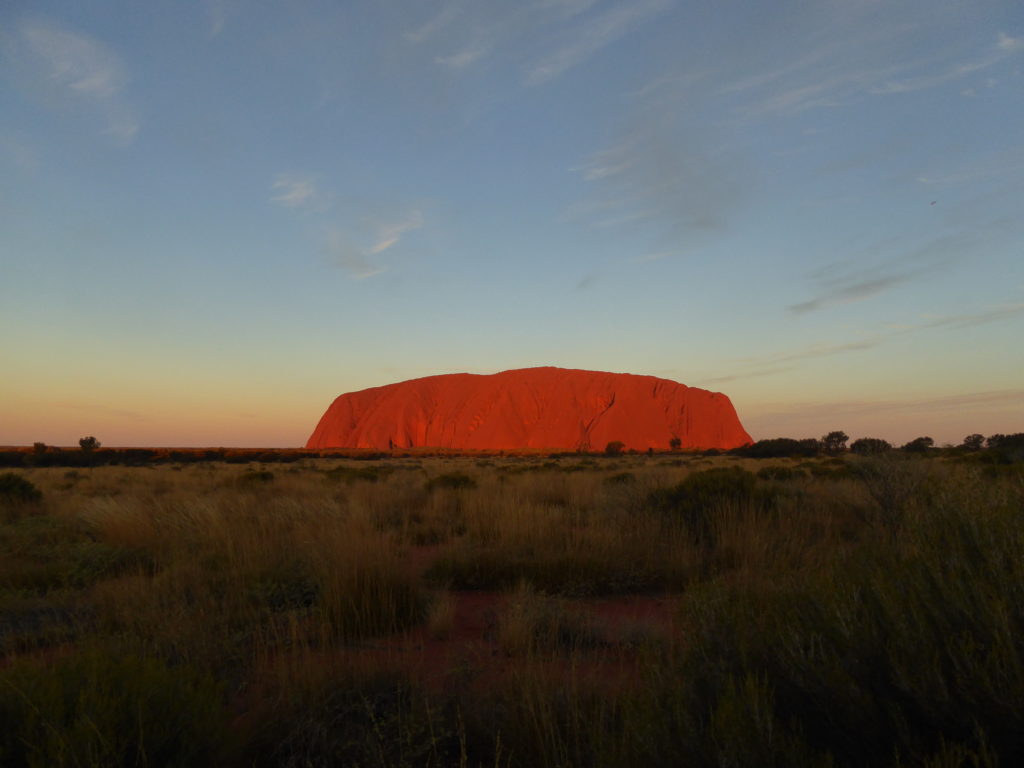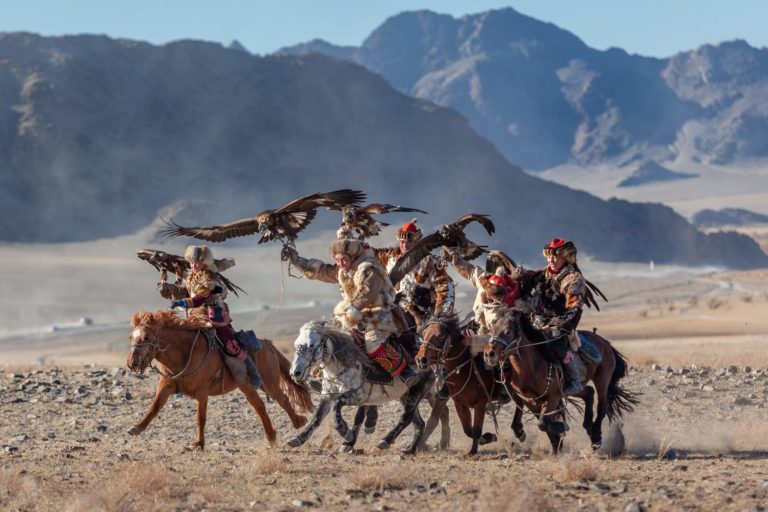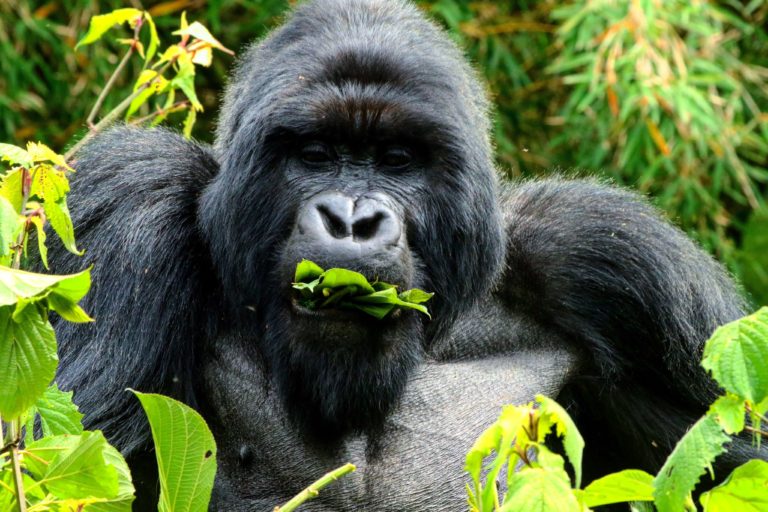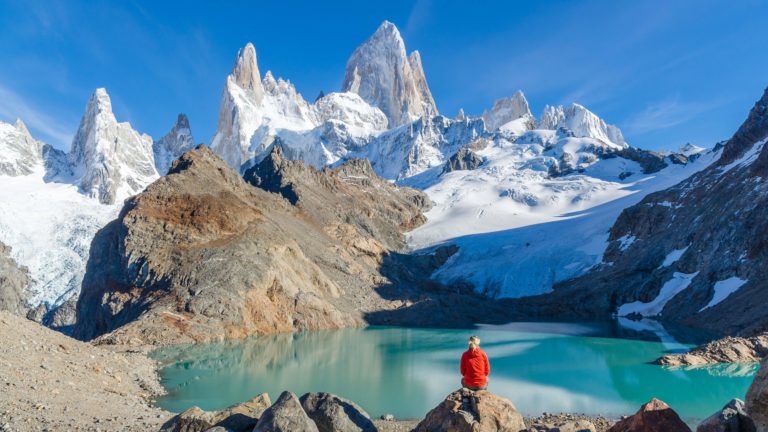Rock your world
in the Red Centre
Australia
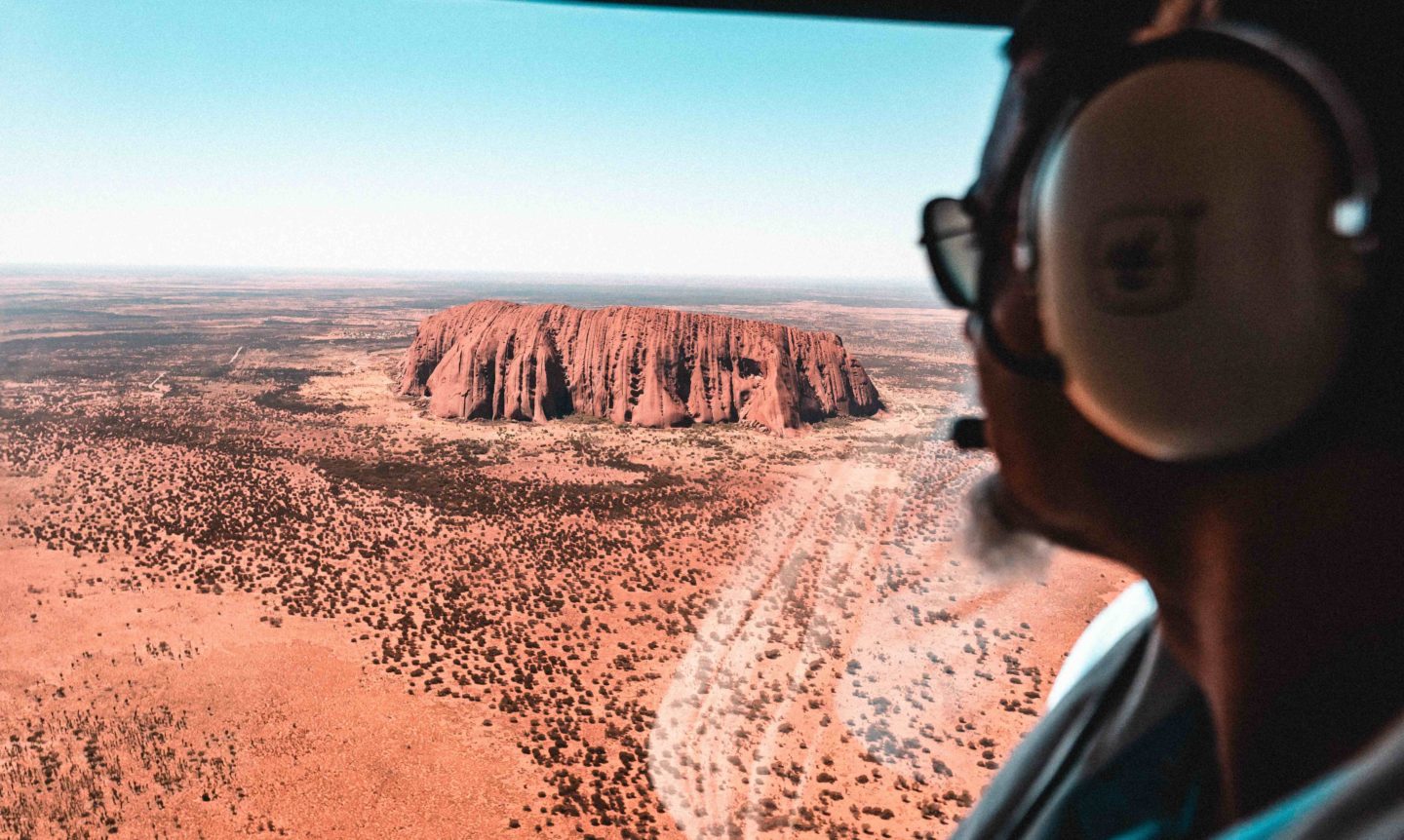
You can walk around it or fly over it. You can get right up close to it or admire it from afar. You can watch it change colour from brown to red to purple to black. How ever you choose to interact with it, Uluru will never cease to astound and impress you. But this vast rock isn’t just a natural wonder at the heart of Australia, it’s also a cultural icon in the hearts of Aborigines.

Formerly known as Ayers Rock, Uluru is one of the largest monoliths in the world but, rather like an iceberg, most of it is underground. The top 348 metres is visible above ground, with around 2.5km hidden beneath the red sand.
Taking the time

Taking the time
I’ve been to Uluru three times and on each occasion, I’ve stayed longer and enjoyed it more. So I recommend taking the time to discover all that this special place has to offer. After all, the rock itself is estimated to be about 500 million years old so why not add an extra day or two to unearth its secrets, such as cool waterholes and caves. It’s not as if watching the rock glow in the setting sun is the only thing to do, although that is such an unforgettable spectacle, you might want to witness it more than once. It’s magical every time.
Cosa tip: factor in enough time for walks, talks, flights and nights.
Learn from the locals
Uluru isn’t only a rock, it’s also home to the Anangu, the indigenous people in this area. Their presence is everywhere, so why not immerse yourself in their culture. I loved the dot-painting workshop with a traditional artist, possibly because I was quite good at the dots. The same can’t be said for learning to play the didgeridoo: I was hopeless but then again, I can’t get a note from an alphorn either. Whether carving wood or making your own bush medicines, there are hands-on experiences for every part of Anangu life.
Cosa tip: take a cave-painting tour to see Uluru through Aboriginal eyes.
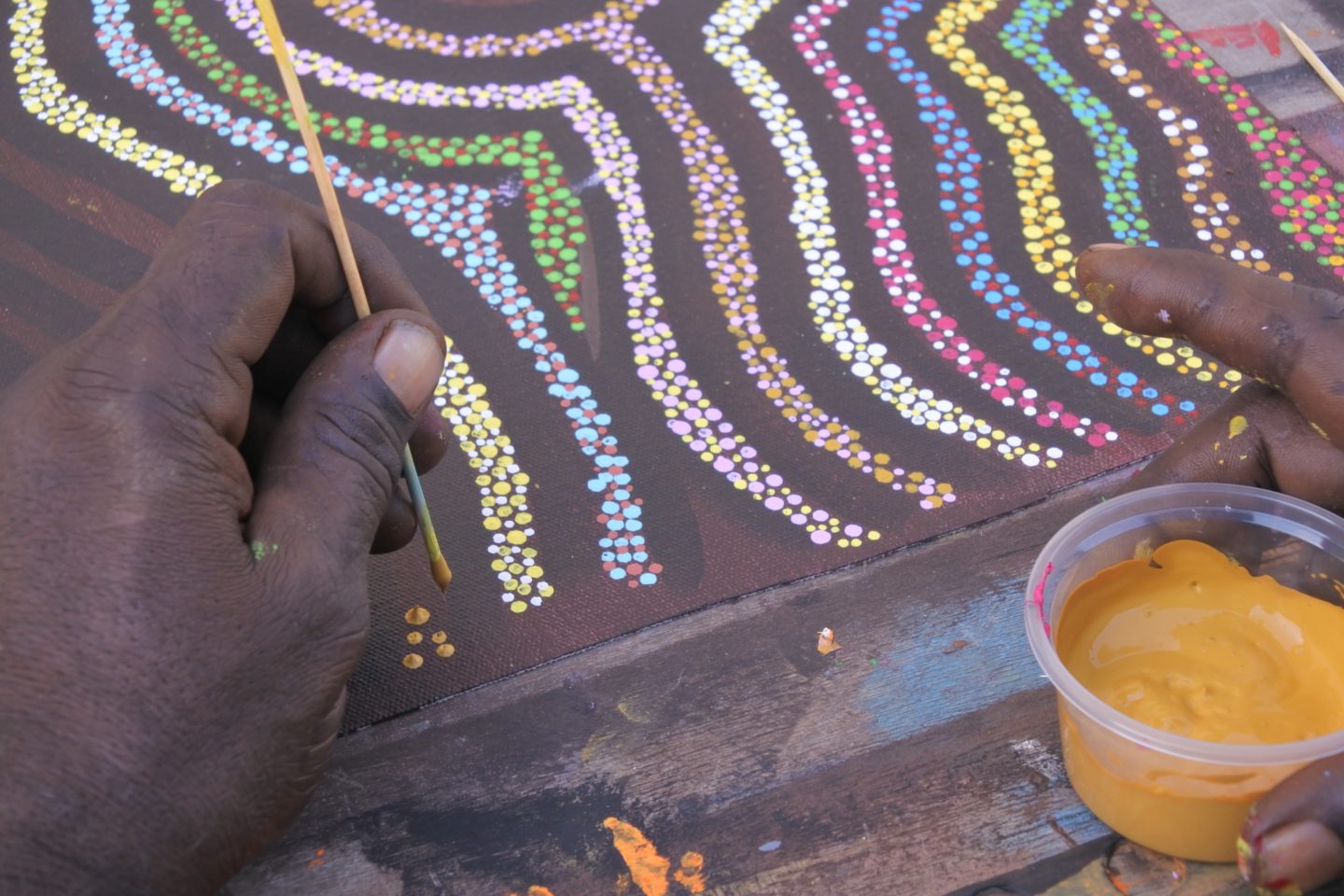
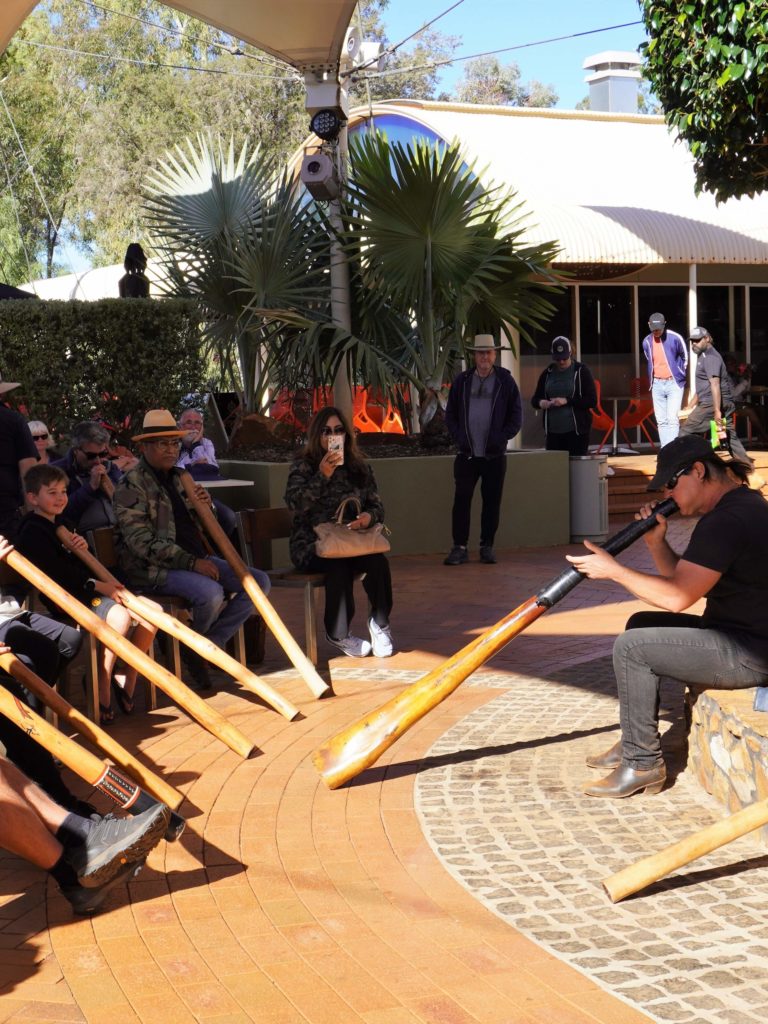
As the sun goes down
Sunset at Uluru is the closest you get to a rush hour in the desert. Everyone comes to see the giant monolith pass through every shade of a rusty rainbow. With Cosa, you’ll have a prime viewing spot so all you have to worry about is having enough memory in your camera. And enough patience. If ever there’s a time for just switching off from the world and living in the moment, this is it.
Cosa tip: sunrise is equally captivating as the dark hulk emerges into a new day.
Twinkle twinkle lots of stars

Twinkle twinkle lots of stars
Out in the desert there is zero light pollution and wonderfully clear skies so it’s the perfect place for stargazing. Seeing the Milky Way strung out above the silhouette of Uluru will live with you forever. Not forgetting the absolute silence of being alone with the stars. I would always include a night tour in your programme, perhaps with a gourmet dinner in the desert first. You’ll love every minute as much as I did.
Cosa tip: desert nights can be cold so bring a jacket.
Take to the skies
Uluru is impressive from the ground but even more so from the air. Only then do you really get an idea of its immense size and irregular shape. The way it rises up out of the sand, it looks almost as if it’s a sleeping dinosaur shrouded in a rusty tarpaulin. My advice is to take a longer flight that includes the multiple domes of nearby Kata Tjuta. Once you’ve seen them from the air, you’ll want to go back by land and explore them as well: the Valley of the Winds hike is truly amazing.
Cosa tip: a flight at sunset is even more memorable.
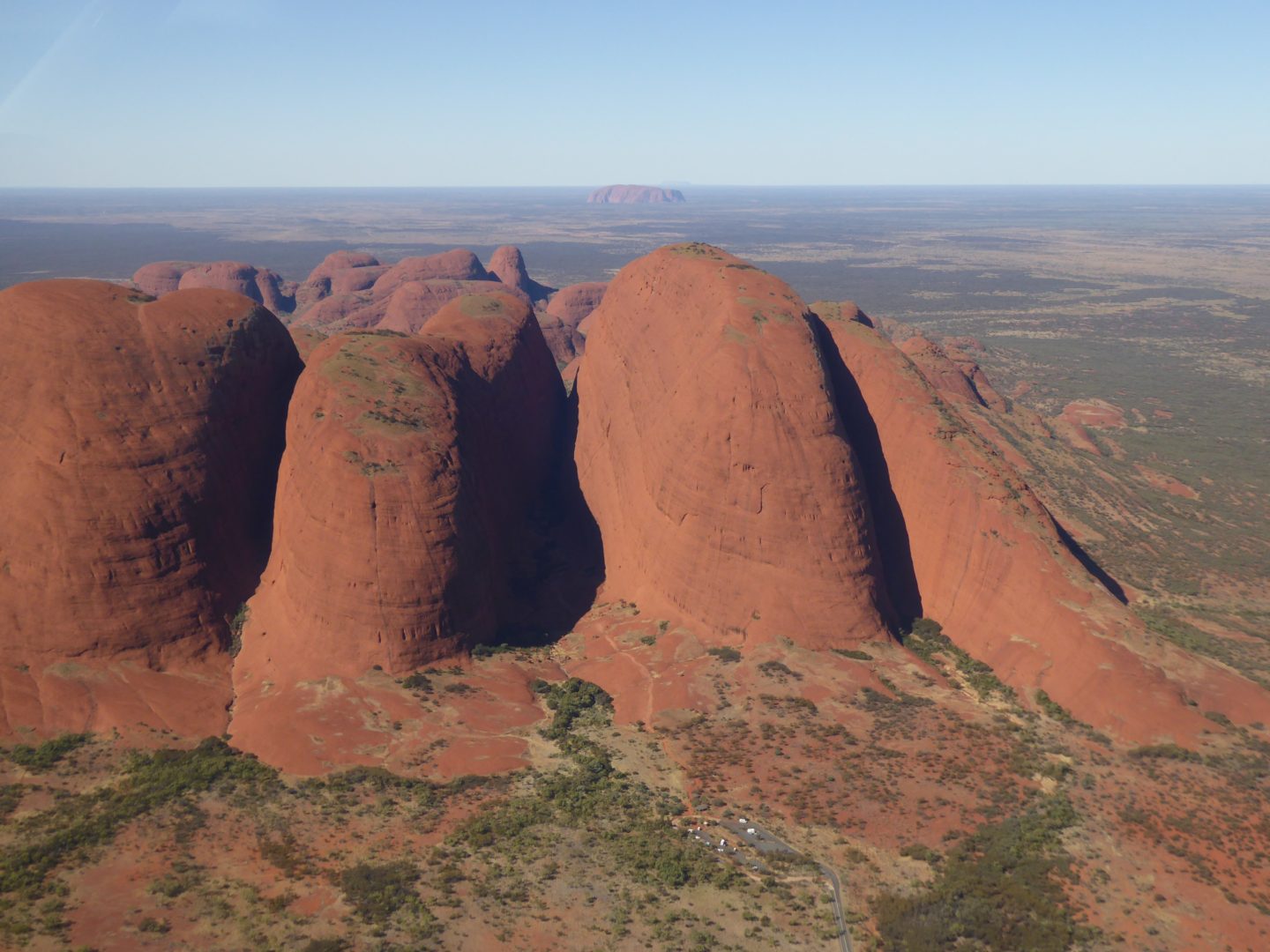

Written by: Diccon Bewes on 11 December 2023

Our annual Inspirations are so great, they get their own seal of approval. Wherever you see this compass logo on an article, it means that we’ve chosen it as one of our Inspirations. All seven Inspirations for 2024 appear on this special map.
You can discover all of Cosa’s inspirations for 2024 here. Or if you’d like to know more, please contact us directly.

